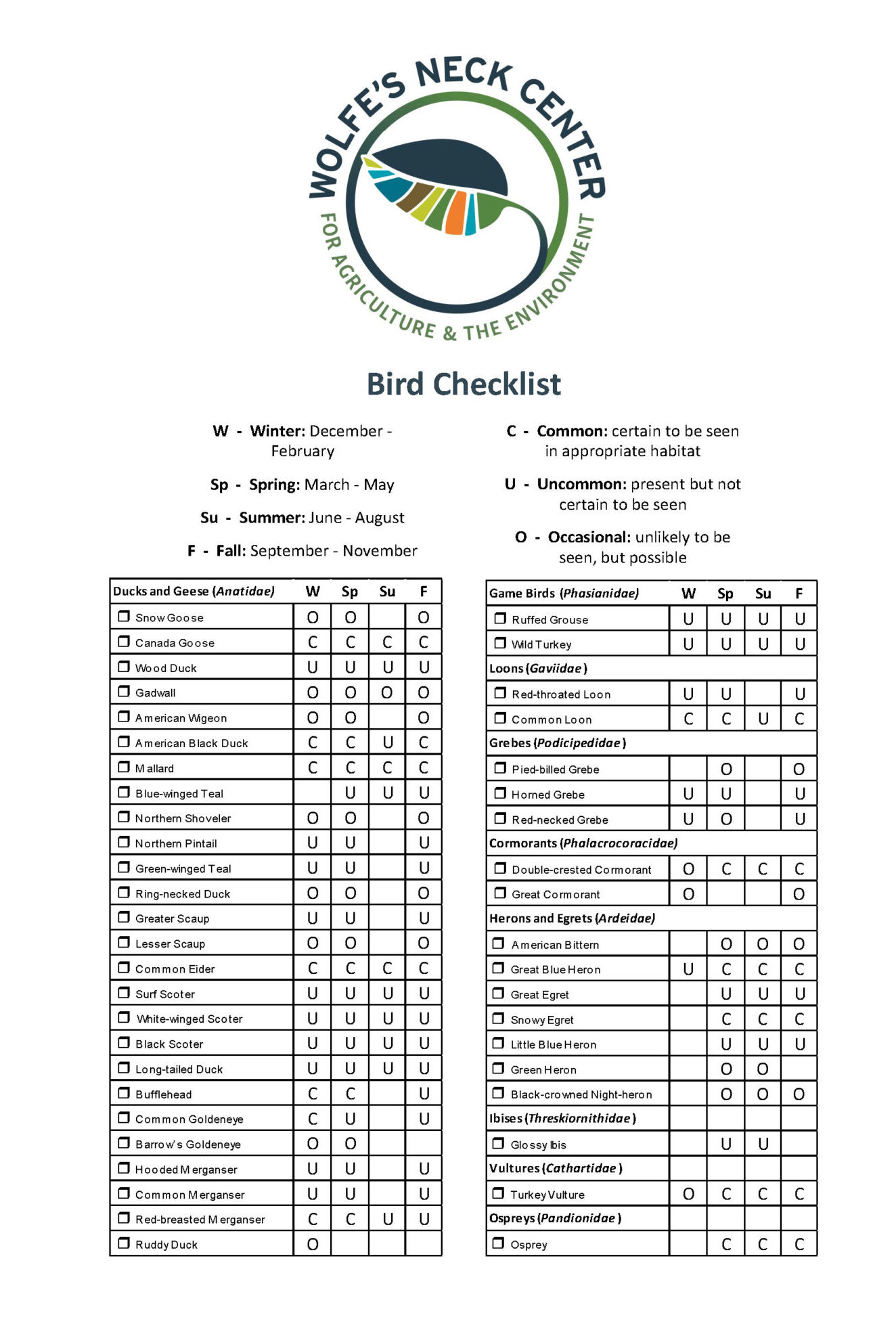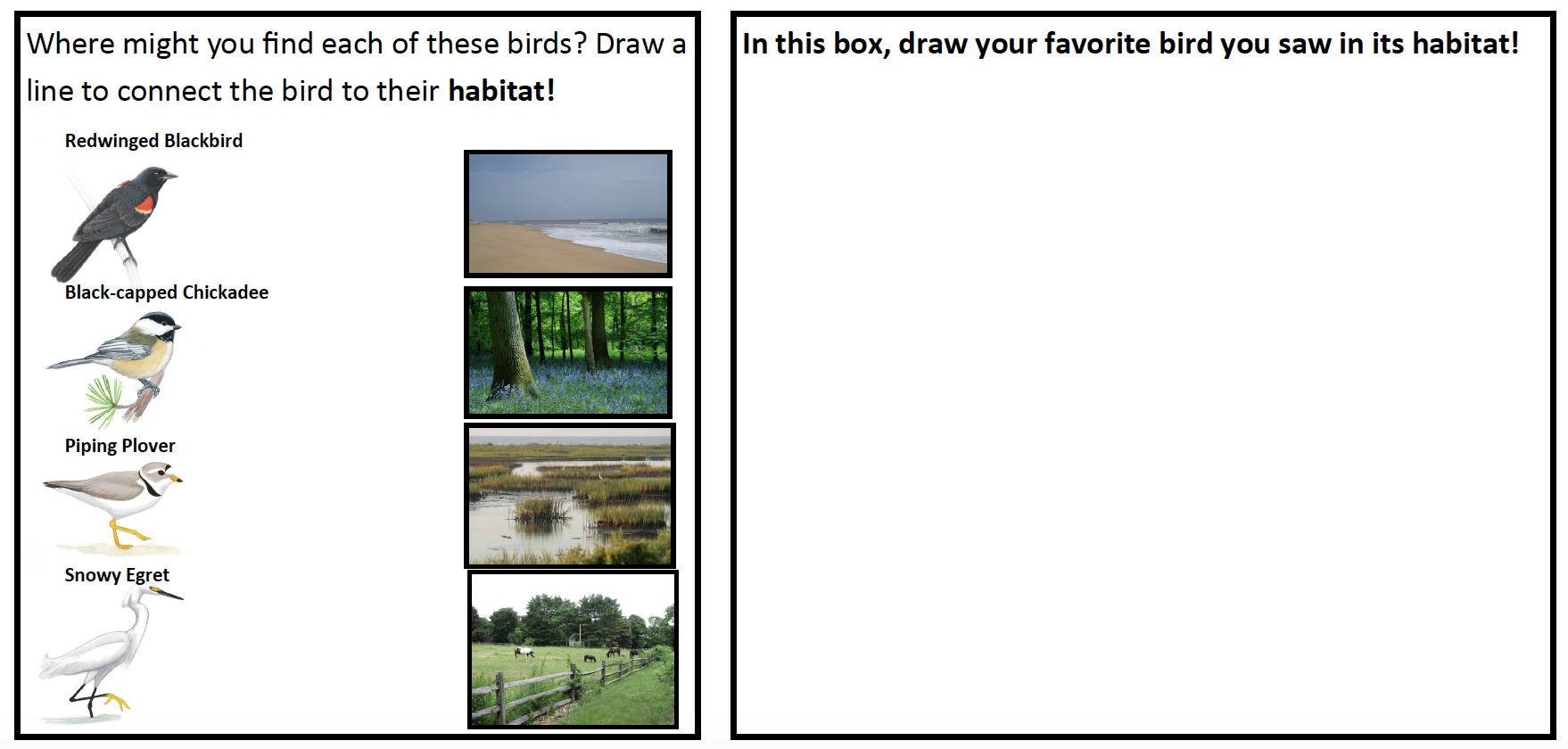I Spy: Migratory Birds
Migratory birds are among the most beautiful and exciting wildlife we can view! Going out on a birding excursion to search for them is a great way to get outside and appreciate the changing of the seasons. Every year as we transition into Spring, seeing our migratory birds is a sure sign for warmer weather and is an indicator of healthy habitats. To celebrate our traveling winged wildlife, take some time to go out on a birding adventure!
LET’S TALK MIGRATION
What is Migration? Migration is the seasonal movement of animals from one region to another. We are lucky enough to have tons of different birds in North America. Here in Maine, we have some that stick around all year (Chickadees, Cardinals, Starlings, etc.), and others we only see certain times of year. Some of these birds come to nest for our warmer months (Bobolinks, Common Yellowthroats, Common Loons, etc.), and some are just passing through on their way elsewhere (White Crowned Sparrows, Semipalmated Plovers, etc.). These types of birds are migratory.
TIME TO GO BIRDING
How do I go birding? One of the best parts about getting into birding is you that don’t need much to get started. Having a pair of binoculars is ideal, but you can make do without. All you need is weather-appropriate clothing and a guidebook. Try The Sibley Field Guide to Birds: Eastern Edition and Bird Watching in Maine by Derek J. Lovitch of Wild Bird Supply here in Freeport.
If you can’t get access to a guidebook, you can also download ‘Cornell’s Merlin Bird ID’ app on your smartphone. This is a great way to help you identify birds in the wild. Another great tool is the Cornell Lab of Ornithology’s eBird, a worldwide birding citizen science project. You can record which birds you see where and see what birds other people have been seeing. You can even take a look at historical birding records for the place you want to go so you can see which birds to expect when you get there.
BIRDING TIPS
It is always best to go birding in the morning, so try to get up early and be out no later than 8 AM. This is a quieter time for you to be able to hear them singing, and when they are more active. Watch as they eat bugs and worms brought out by the early morning dew.
Choose your location the night before. Some great spots to start can be any marsh or estuary, coastline, field, or even your local park. Some great local spots are Biddeford Pool, Scarborough Marsh, Gilsland Farm Audubon Center, Thorncrag Preserve, Back Cove Park, and of course, Wolfe’s Neck Center!
Make sure you travel quietly in order to not to scare away any birds, and refrain from chasing, or flushing birds out of trees and bushes – the best part of birding is observing them as if you weren’t even there! This also means leaving the birdseed at home.
BIRDING MATERIALS FOR YOU
Bird Checklist
Click Here to download our Bird Checklist
Print the 2-page document double-sided and fold at the center
Use our bird checklist to check off the birds you see as you go. We use this same list in our ‘Wings Over Wolfe’s Neck’ program at the farm, so it should work great if you are birding in southern Maine. Before long you’ll have some rare sightings and will even start changing your weekend plans to go and search for the more elusive birds.
Bird Worksheet
Click Here to download our Bird Worksheet
For those of you with kids at home, here is a worksheet for your young learners to try after your birding expedition. Once you’re back at home, look back at your checklist of what you saw, compare it to your guidebook or find photos online, and complete the worksheet.
We hope that birding can become a great part of your outdoor recreation and that we see you with your binoculars down on the farm!
← Back to Educational Activities

